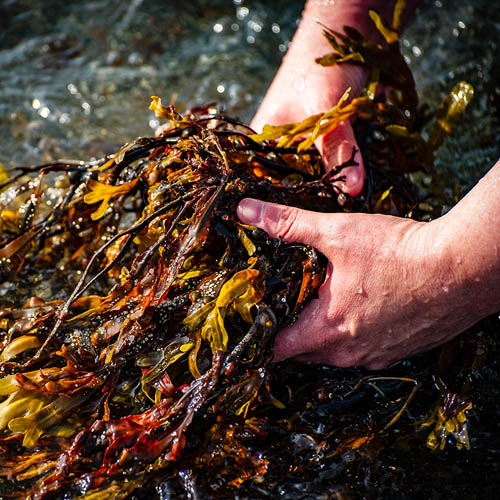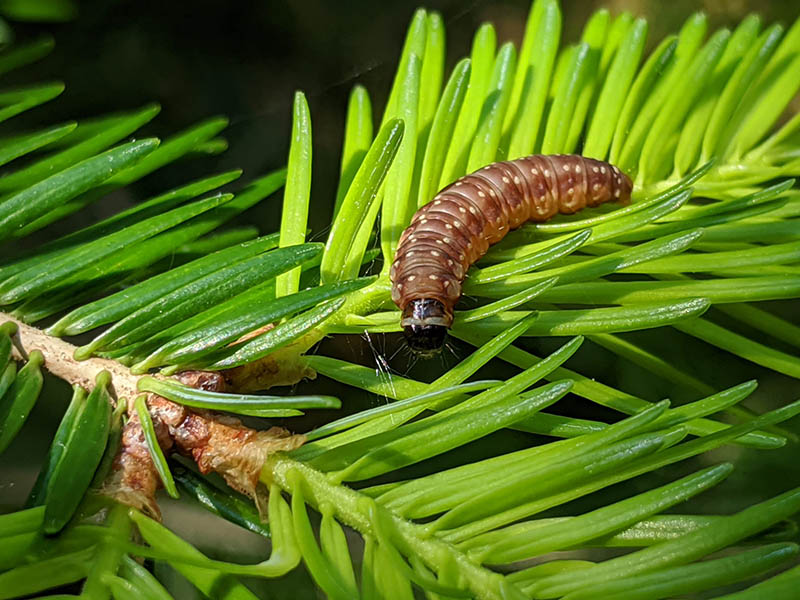Research Report: 2022
▼ Choose a report:

Powered by Research & Graduate Studies

Powered by Arts and Social Science

Powered by Science and the Environment


Spruce budworm
Everyone knows that the spruce budworm is not a friend to trees. But how to budworm infestations affect cultural, spiritual and recreational "ecosystem services?"
"These are services that include a culturally meaningful component, such as fishing, hiking and creative inspiration," said Dr. Camille Ouellet-Dallaire. "They are often more challenging to quantify in traditional ecological and economic assessments."
The title of the project of Dr. Ouellet-Dallaire and co-principal investigator Dr. Rachel Jekanowski is "Designing regional and local scale indicators to quantify the impacts of SBW outbreak in Western Newfoundland on cultural ecosystem services."
They are particularly interested in Forest Management District 11 in Western Newfoundland, an area that has recently seen an increase in spruce budworm outbreaks.
In their application, they explained that different management strategies have been used, but often have not considered local and remote communities uses of the landscape outside timber. Their hope is to work with Indigenous and municipal partners to learn how implications of spruce budworm outbreaks might affect Indigenous and rural ways of knowing.
These different management strategies have led to Gros Morne National Park following a no-treatment approach. As a result, forests within the national park have started to be heavily defoliated, leading to drastic changes in the landscape, especially regarding the visual aesthetics of the viewsheds.
"These changes in appearance in forest structures and habitat availability, as well as traditional ecosystem services, could have important repercussions on the benefits of the cultural, spiritual and recreational ecosystem services that local communities gain from their surrounding environments," said Dr. Jekanowski, adding that the project's novel approach will examine effects on cultural and mental health, using both artistic and scientific approaches.
Through their study, which has been funded to the tune of $307,855 by Natural Resources Canada, the researchers will use geospatial modeling and art-based methods to design quantifiable indicators at local and regional scales in spruce budworm outbreak areas.

Dr. Oullet-Dallaire
Dr. Oullet-Dallaire said while they plan to focus the research in two areas - recreational fishing and creative/cultural inspiration-based visual aesthetics - the final list of ecosystem services will be co-identified and co-created with research partners.
In the recreational fishing component, the researchers will adapt a method for quantifying hydrological services, applying it to the ecological needs of the salmon population. This process will identify important habitats for salmonids across the region's watersheds and how they might be disturbed thermally or nutrient-wise by spruce budworm outbreaks.
The cultural/creative component will involve developing arts-based methods for determining cultural impacts of outbreaks on human-landscape relationships in Western Newfoundland.

Dr. Jekanowski
"Our approach will examine how the visual aesthetics of disturbed forests impact cultural ecosystems services for tourists, cultural practitioners, and other users, drawing on research creation and cultural mapping in the environmental humanities," said Dr. Jekanowski.
For example, cultural mapping captures and documents human relationship to place through visual media, such as photography and film making. One example of a cultural mapping deliverable is a story map, which groups maps into a narrative. The researchers will also examine the intersecting effects of climate change and spruce budworm outbreaks, including users' emotional well-being, spiritual fulfillment and aesthetic experiences.
Geospatial analyses will also factor into the methodology, to provide a "hotspot" analysis of viewsheds (geographical areas that are within line-of-sight). This will help to identify the portions of a landscape can be seen at a given location or along a trail and will be combined with art-based methods to highlight the contribution of visual aesthetics to CSR-ES at selected locations. Potential fishing locations may also be identified in these analyses.
"Our approach is innovative because it combines a geospatial ecosystem services modeling with methods from environmental humanities, including cultural mapping through photography and storytelling," said Dr. Jekanowski. "It also provides a place-based approach designed for rural and remote areas that could be applied in other boreal regions or to other landscape changes, such as disturbances from other forest insects, or large-scale natural resource developments." The methods designed in the project will support an interdisciplinary and intersectional view of the SBW outbreaks in Western Newfoundland that could be relevant in a variety of contexts beyond this region.
"Going forward, these analyses could be used to inform key policy recommendations; cultural ecosystem services indicators; and serve as the basis for ongoing community-led outbreak monitoring programs, whether for the spruce budworm or other species," said Dr. Oullet-Dallaire.
For more information, contact the researchers at cdallaire@grenfell.mun.ca and/or rjekanowski@grenfell.mun.ca.